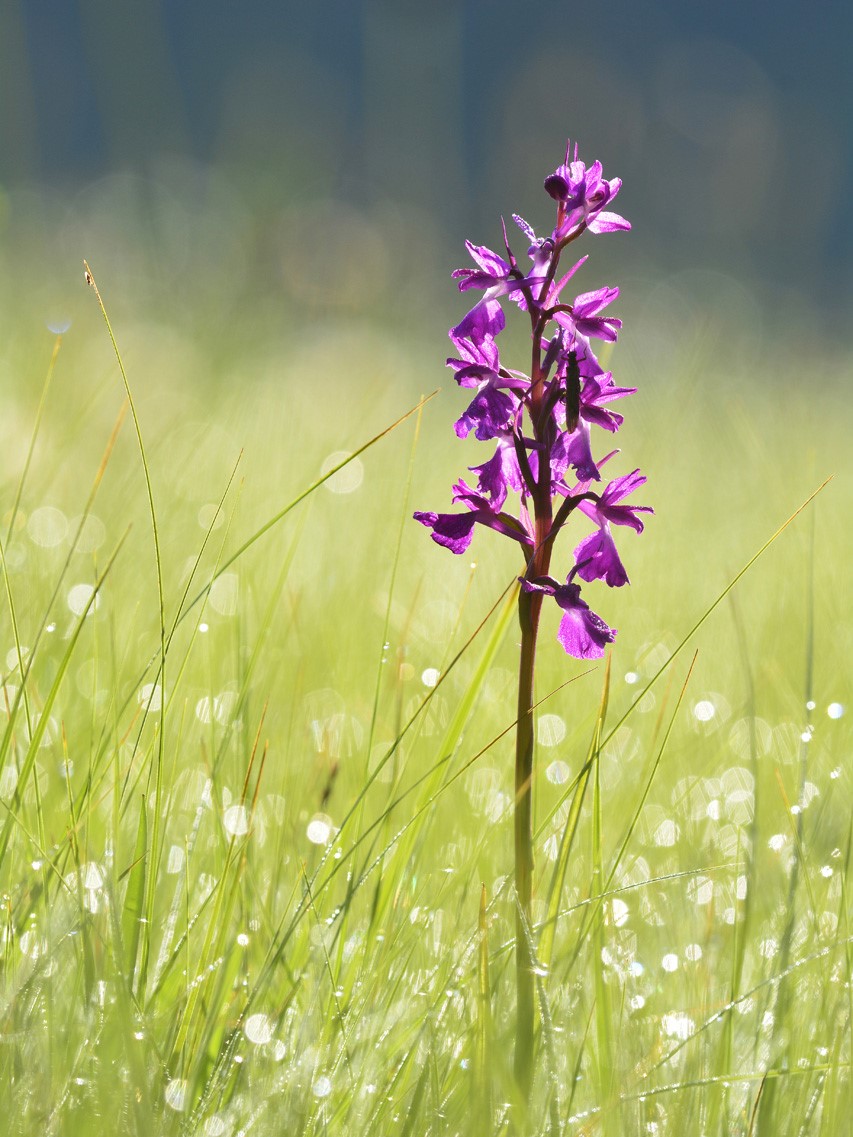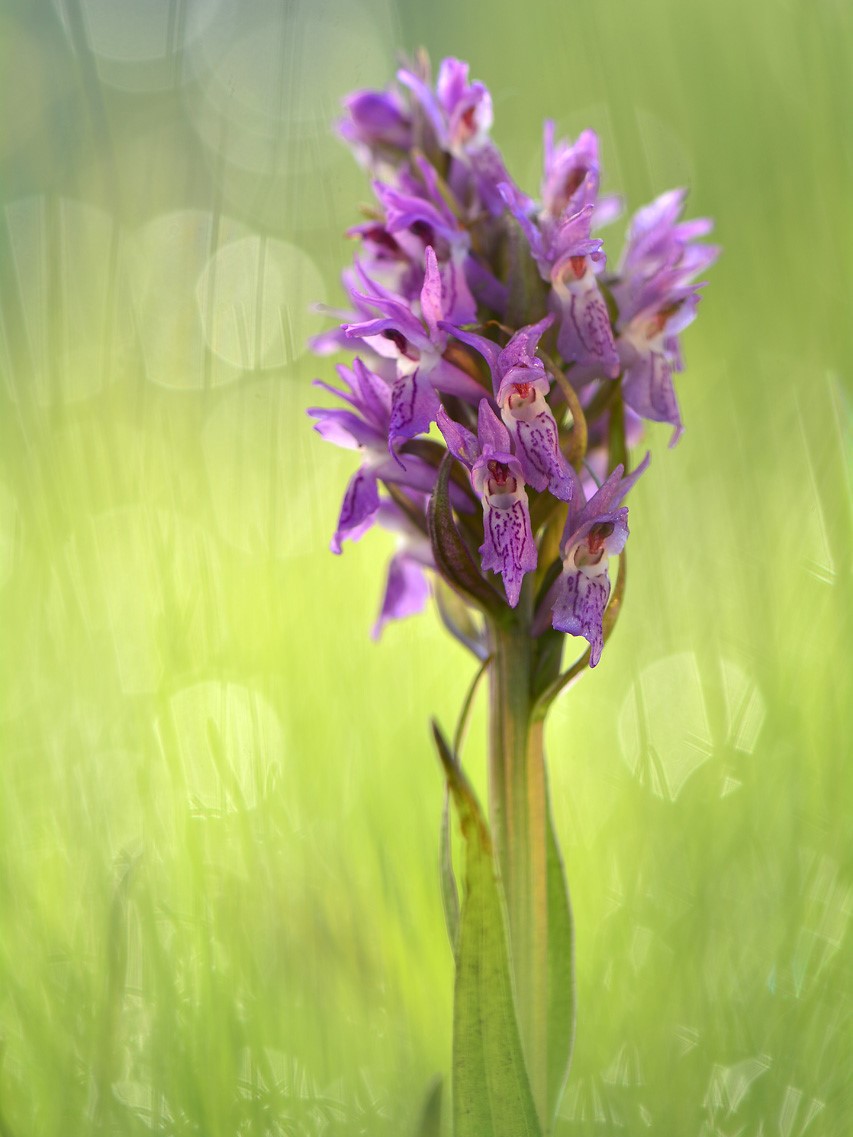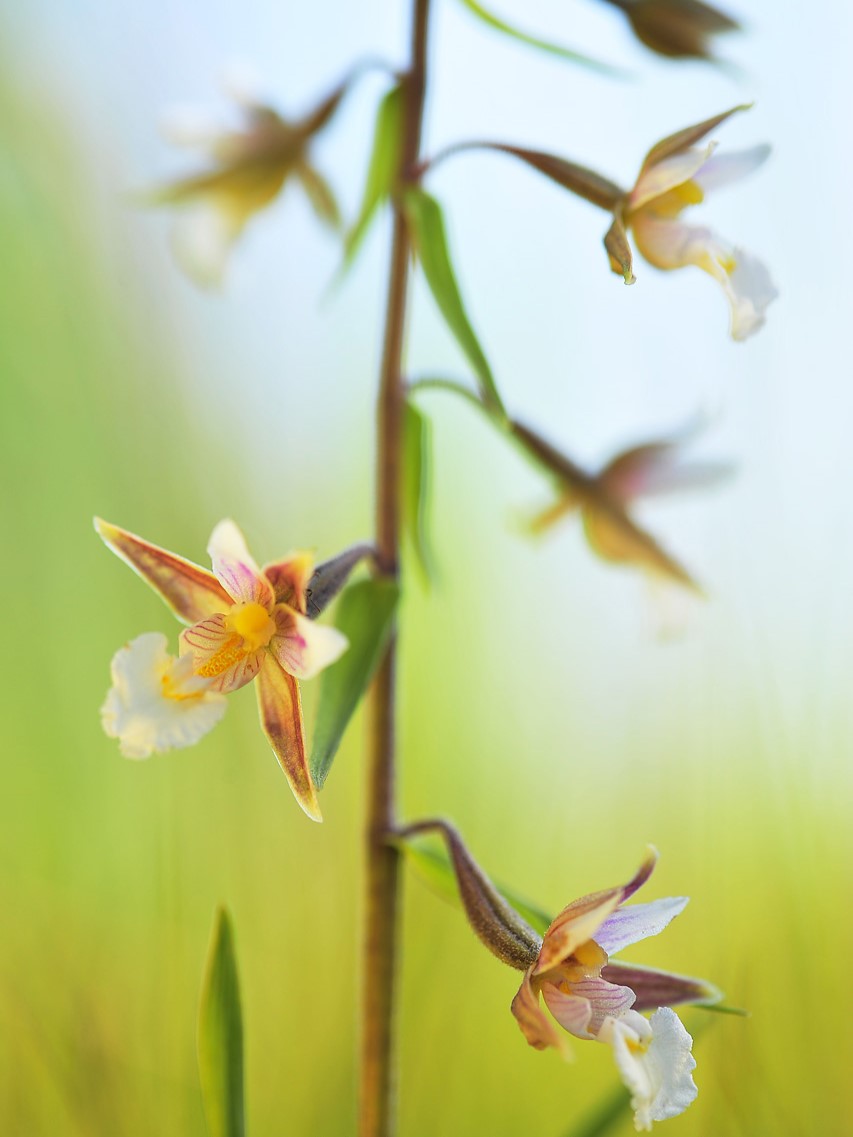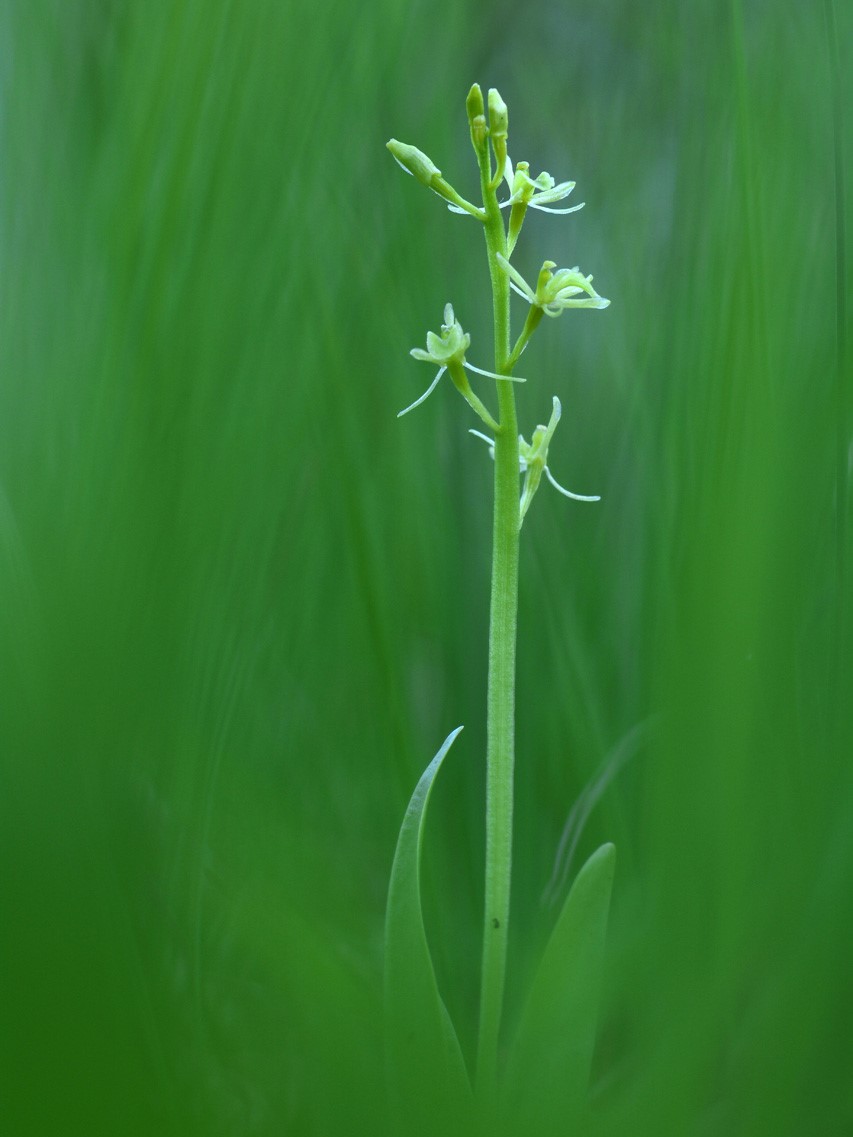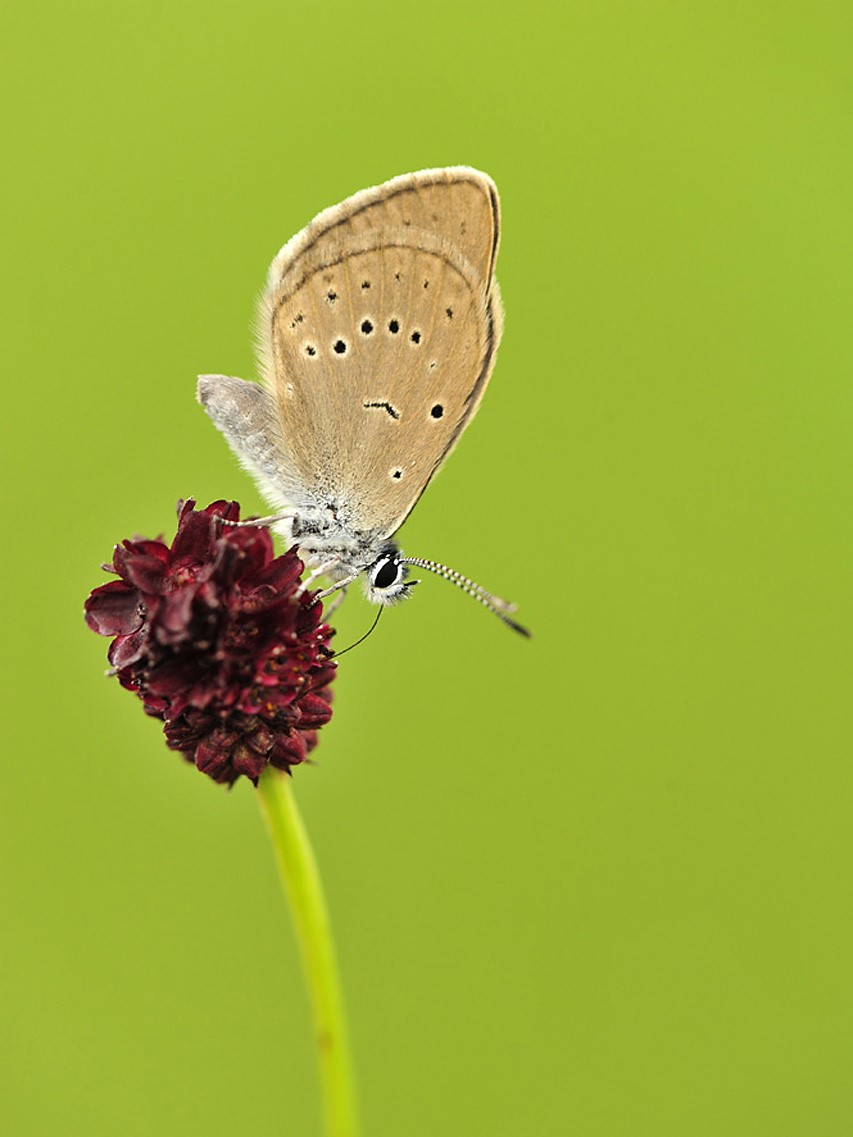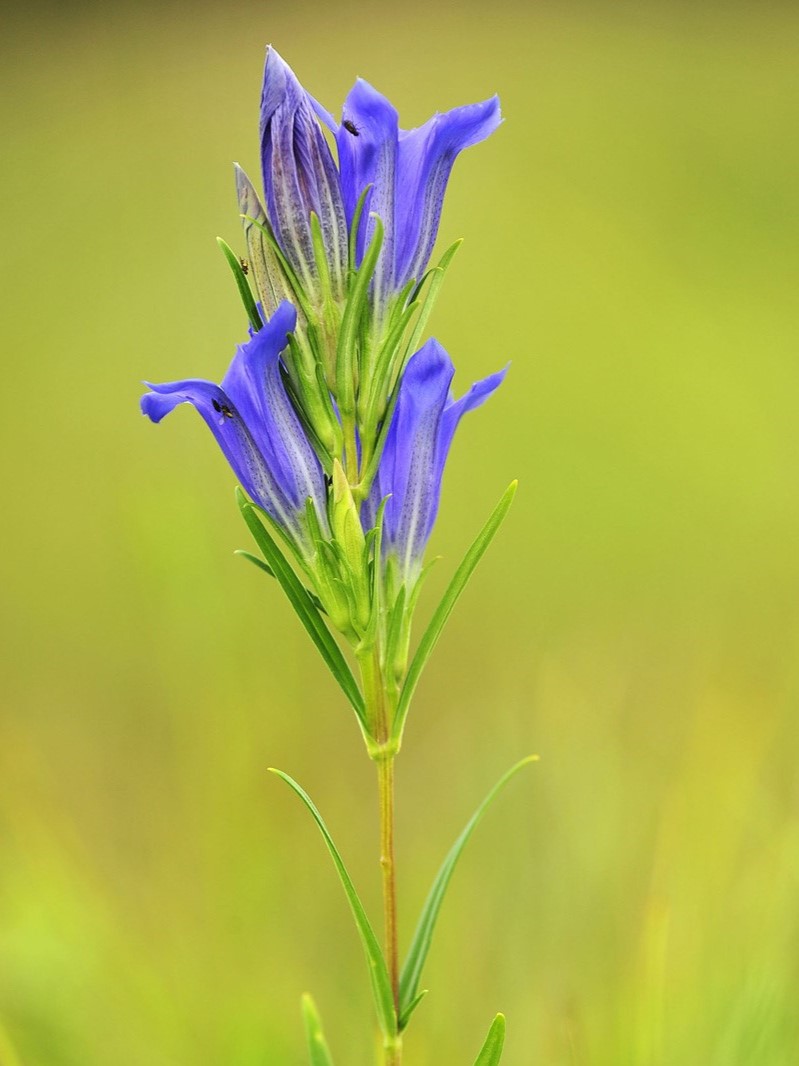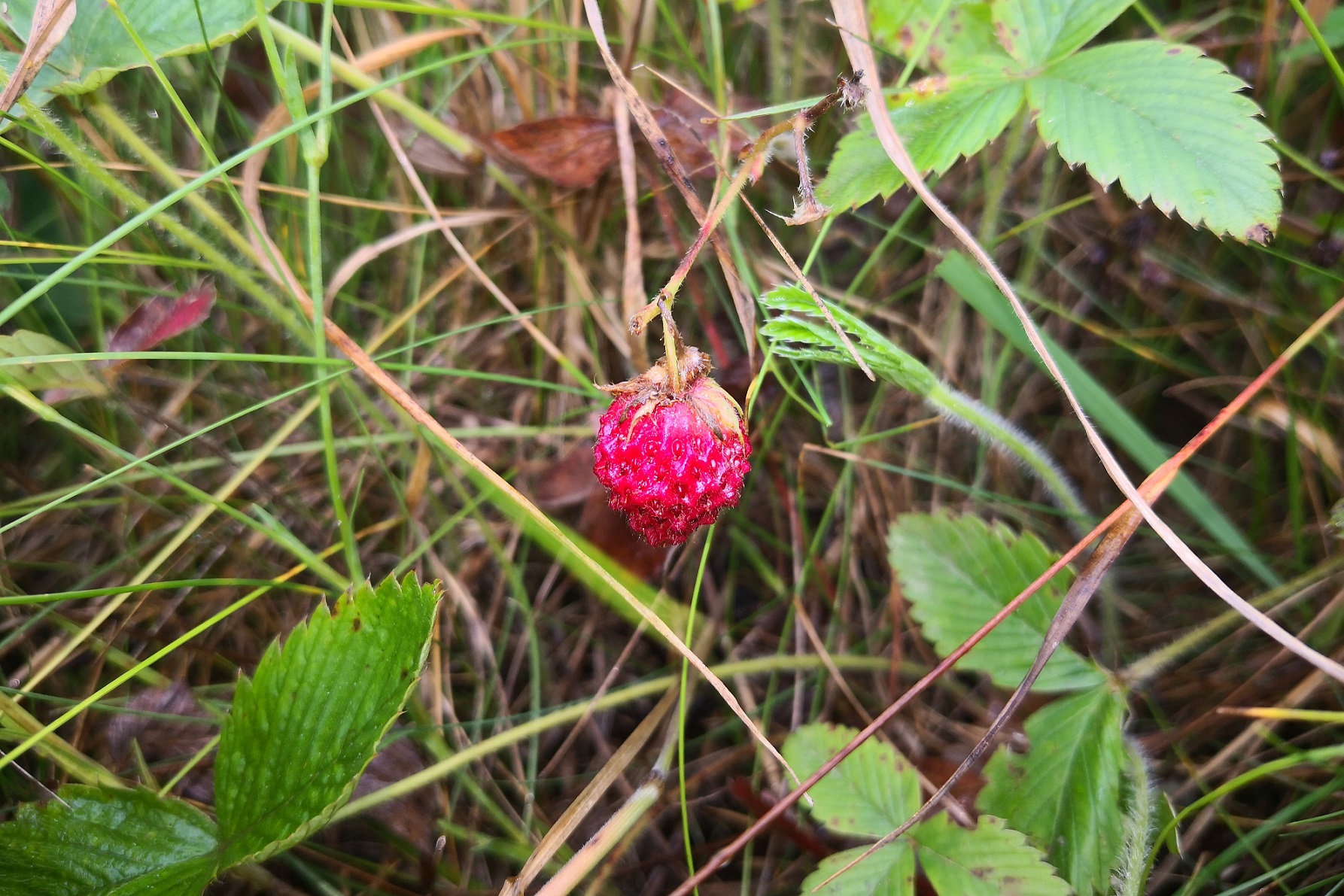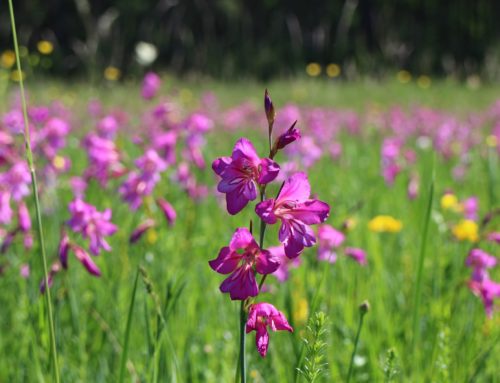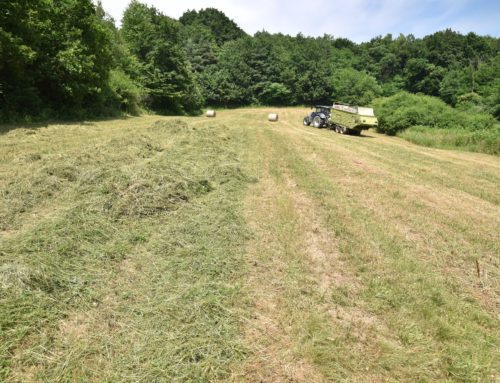When we think of orchids, most of us first imagine plants with lush flowers decorating windowsills of many homes. However, these are far from all orchid species, as we now know around 28,000 species. Most of them thrive in tropical regions of our Earth, but some of them are also found in central Europe, Slovenia.
Slovenia is home to approximately 80 species and subspecies of these interesting plants. Half of all Slovenian orchids can be found in Notranjska Regional Park and many species associated with humid environments thrive in the area of intermittent Lake Cerknica.
Western marsh-orchid (Dactylorhiza majalis) and Early marsh-orchid (D. incarnata), as well as the Bog orchid (Anacamptis palustris) are not easy to find in such large numbers elsewhere. They thrive only on unfertilized moist soil. Moreover, they also need a lot of light to grow and bloom. Therefore, they are threatened by modern human interventions, such as drying of the land, fertilization, and the abandonment of mowing. In some meadows, these three orchids are joined by the common Marsh helleborine (Epipactis palustris), Chalk fragrant-orchid (Gymnadenia conopsea), which also grows on drier soils, and Yellow wide-lip orchid (Liparis loeselii). At Lake Cerknica the latter only grows on a single location. All three require barren – unfertilized soil, where specific fungi species that orchids rely on, are found.
So, these attractive plants also thrive in our country. But unlike tropical relatives that grow attached to large trees, our orchids are rooted in the ground. But not in just any soil! Meadow orchids only thrive on extensively managed land and are indicators of ‘healthy’ soils. This is exactly why we use them as bioindicators – indicators of the state of nature and natural processes. If you come across orchids on a walk, you know that you are in a place where nature is unspoiled, and people still live in harmony with it. That is why we chose orchids as indicators of areas that need to be included in the cadastre of High Nature Value meadows
In the cadastre we also included areas of well-preserved, species-rich, or otherwise special meadows based on the presence of other species that also require unimproved hay meadows that are mowed when the seeds ripen. These include the Great burnet, which is the only food source of Scarce large blue caterpillars, Wild gladiolus and Marsh gentian. They can only be found on moist soil of extensively managed meadows, which is why, unfortunately, their populations are in steady decline.
If we keep meadows colorful, nature will thank us! It would also be fitting to leave meadows to our descendants in at least such a state as they were received in from our ancestors.


